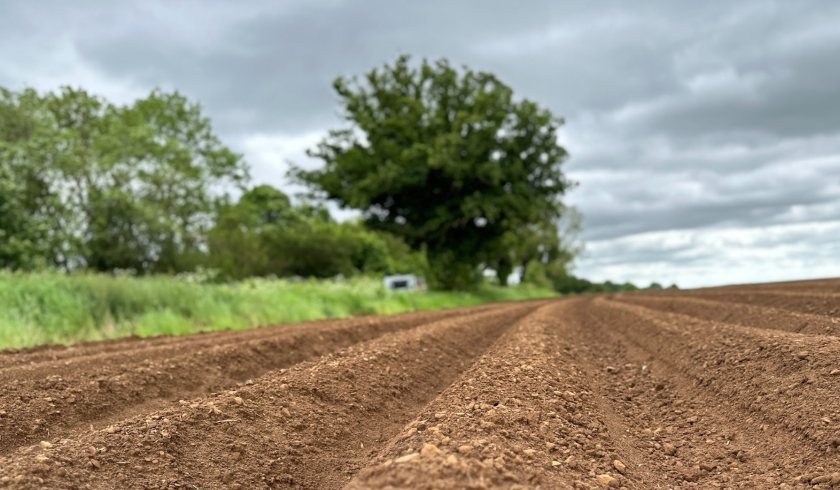
Drier conditions have led to an increase in maincrop potato planting in the past month, with growers urged to consider the role biologicals could play in their 2024 nitrogen strategy.
Strong results last season showed how BlueN – Corteva Agriscience's foliar-applied biostimulant – provides a supplemental source of nitrogen for potato crops.
The nutrient efficiency optimiser product captures nitrogen from the air and converts it into ammonium.
BlueN provides the equivalent of around 30kg/ha of supplemental nitrogen in a season.
Depending on the crop and fertiliser strategy, Corteva says farmers can use it in addition to their existing programme or to replace nitrogen when optimising rates.
John Sellars, category marketing manager at firm, said the manufacturing of fertilisers was a hugely energy-consuming process.
"BlueN provides supplemental nitrogen to crops without the risk of leaching, increasing nitrogen use efficiency," he explained.
“The bacteria in BlueN fixes nitrogen from the air via anenzymatic reaction meeting changing market expectations by being able to provide a sustainable source of nitrogen.”
After field trials in the UK and across Europe, potato growers experienced their first full year using the biostimulant in 2023.
Cornish potato grower Andrew Thomas saw a 20% increase in yield after applying the product for the first time last year.
Andrew grows vegetables at his 24-hectare farm in St Hilary, Cornwall, and admits he wasn’t sold on the idea of biological treatments initially.
After trailing a one-hectare block, he said he noticed a difference in the crop and decided to apply the product across more of the farm.
He sprayed some of his main crop of Mozart potatoes, applying BlueN at 333g/ha at the point when the crop was meeting down the rows.
“I sprayed one field but I didn’t spray the other because I ran out of time – I wish I had now,” he said. “We could see the difference in the size of the tubers, the quality and the yield.
“Spring last year was quite cold and wet, so the potatoes were looking a bit stressed. After I applied BlueN I couldn’t see much difference for a fortnight, but after that I could tell they’d picked up more nitrogen – I could see a difference in the foliage.
“It increased yield by at least 20%, which equated to about 2.5t/ha. I have told many fellow growers about the experience I had because it exceeded all expectations.”
The optimal time for application is between growth stages BBCH 25 to 33.
BlueN enters the plant through leaf stomata and moves throughout the plant to photosynthetic cells including the areas of new growth.
Once the bacteria have established in-between the cells, they start the nitrogen fixing cycle, delivering ammonium to the plant.
This means that as the crop grows, the bacteria continuously provide supplemental nitrogen to the plants.
The bacteria also have chromophores that reflect light towards chloroplasts, intensifying photosynthesis and increasing the synthesis of nutrients for use in plant growth.
